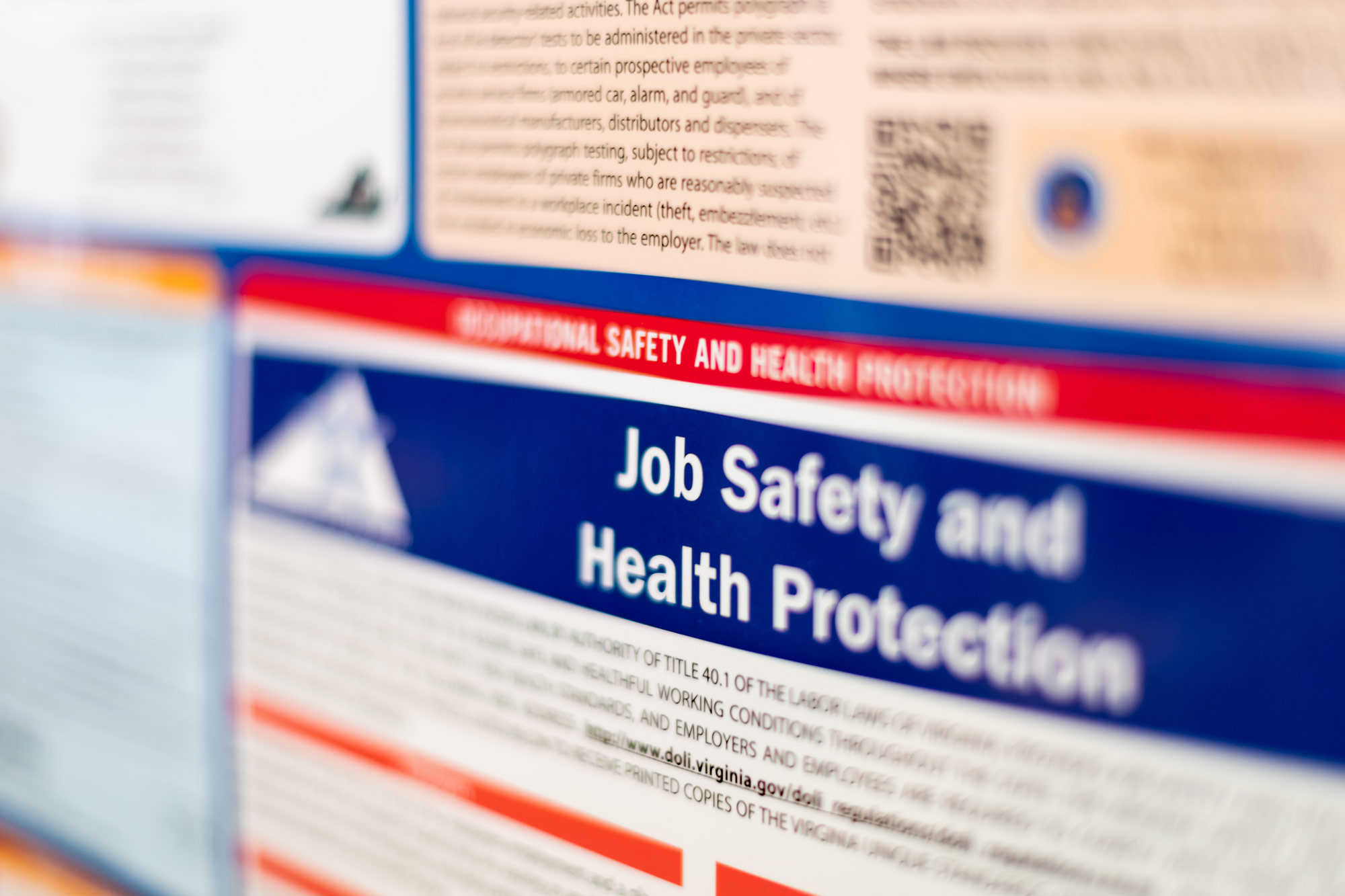
Managing mandatory workplace posters and notices
One of the most time-consuming tasks facing employers and HR professionals is keeping up with the ever-growing number of mandatory employment law posters and notices that must be displayed in the workplace or provided in written form to employees. As legally mandated labor law poster and notice requirements continue to increase, staying in compliance becomes even more complex and often confusing.
First, employers must identify the required federal, state, and local labor law posters, display them in appropriate locations, and then keep them up to date. In addition, employers must ensure that employees and new hires are individually provided with mandatory written notices. These notices are legally required by federal and state laws and are often overlooked by employers. Failure to display workplace posters or provide written notices violates the law and may result in fines or litigation.
In this article, we will look at some of the most common employment posters employers must display in the workplace and best practices for complying with legally mandated written notice requirements.
Six posters employers must have
Given the number of federal, state, or local posting requirements, the typical employer could easily be required to display and maintain a dozen posters. Let’s look at some of the most common federally mandated posters that employers must post to notify employees.
1. “Know Your Rights: Workplace Discrimination is Illegal”—
This poster, which is required by the Equal Employment Opportunity Commission (EEOC), outlines federal antidiscrimination laws and replaces the former “EEO is the Law” poster. The EEOC notice must be posted by private sector businesses with 15 or more employees, as well as state and local government agencies, educational institutions, unions, and staffing agencies. Employers must replace the former EEO poster with the updated “Know Your Rights” version, effective October 20, 2022.
2. “Family and Medical Leave Act (FMLA)”—
This poster outlines FMLA rights and must be posted by all covered employers. An employer generally will be covered under the FMLA if it is a private employer with 50 or more employees, a public agency, or a public or private elementary or secondary school.
3. “Fair Labor Standards Act (FLSA)” –
All covered employers must post minimum wage information under the FLSA, including overtime pay information and youth employment standards. The FLSA applies to virtually all employers and employees, unless specifically exempted by the Act.
4. “Employee Polygraph Protection Act (EPPA)”—
Private employers must post a notice that the EPPA prohibits the use of polygraph (i.e., “lie detector”) tests by most employers.
5. “Job Safety and Health: It’s the Law”—
This poster is required under the Occupational Safety and Health Administration (OSHA) and must be posted by most private sector employers. Several states also require a state version to be posted.
6. “Uniformed Services Employment and Reemployment Rights Act (USERRA)”—
Covered employers must post or provide to employees (e.g., by handing or mailing out the notice, or distributing the notice via electronic mail) a notice of the rights and benefits under USERRA. USERRA applies to virtually all employers, regardless of size, including the federal government.
The above named posters are only a few of the federal notice requirements. State or local laws may require additional posters.
Where to post labor law posters
Required posters must be placed in “conspicuous areas” where everyone, including job applicants, will easily see them. A common area, such as a break room or the workplace’s main entrance area, is an optimal choice for displaying posters. Many posters also have size requirements to ensure they can be easily read.
Businesses that do not have the required postings displayed in the workplace may face hefty fines or citations for noncompliance. These fines and citations are levied for each missing poster for each location. For example, in 2024, not posting the FMLA poster may result in a $211 fine per offense. Not having an OSHA poster displayed comes with a $16,131 civil penalty.
Employers can obtain the above posters from the U.S. Department of Labor (DOL). State and federal issuing agencies generally make posters available for no cost on the appropriate agency website. Another option for employers is to order laminated all-in-one-type posters from a trustworthy poster vendor.
Written notices
In addition to displaying workplace posters, state and federal laws require employers to provide employees and new hires with certain notices in writing. This includes mandatory employment law notices, state or federal forms, pamphlets, and employer policies.
For example, federal forms/notices that must be provided individually to employees include Form I-9, Form W-4, Affordable Care Act notices, and COBRA notices, among others.
Written notices are also required by many states. For example, California requires employers to provide more than 23 written notices to employees at the time of hire or when other events occur (e.g., separation of employment, plant closings, etc.) These mandatory notices include the Sexual Harassment Fact Sheet, Paid Family Leave Brochure, State Disability Insurance Provisions, Workers’ Compensation Time of Hire Pamphlet, Wage Theft Protection Act notice, and many more.
Notifying remote workers
The continually growing remote workforce poses a challenge for employers that must display posters in their workplaces to notify employees of their rights under federal and state laws. In response to the COVID-19 pandemic and the spike of remote workers, the U.S. Department of Labor (DOL) provided guidance on complying with its notice and posting requirements when employees are working remotely. For posters that must be continually posted, the DOL guidance (Field Assistance Bulletin No. 2020-7) clarifies that an electronic posting constitutes a sufficient substitute for a physical, hard copy posting requirement only where:
- All employees work exclusively from home;
- All employees customarily receive information from the employer electronically; and
- All employees have readily available access to the electronic posting at all times.
In most cases, electronic notices supplement but do not replace the statutory requirements that employers post a hard-copy notice. Where an employer has employees on-site and other employees teleworking full-time, hard copy posting is still required for on-site employees. Employers should also be aware that the DOL guidance applies only to federal notices–states or municipalities may have separate posting requirements.
Recommendations and resources
A best practice for employers—to ensure employees are provided with all the mandatory written notices—is to create and distribute a New Hire Packet (NHP) to all new employees. The NHP should include all the forms, notices, or pamphlets that must be given to new hires, as well as any optional notices the employer chooses to supply to employees when they come onboard. HR Hero now provides New Hire Packets for all 50 states and the District of Columbia, which subscribers can access by logging in and searching “New Hire Packet” for their state.
Takeaways for workplace postings and notices
It’s important that employers identify reliable resources to help keep their business in compliance with the legal requirements and avoid expensive penalties or fines. Employers should also be aware that workplace posters must be updated whenever the underlying laws are updated. There may be new mandated versions, or the information may change. For example, in many states, the minimum wage rate changes annually, requiring the respective posters to be replaced with newer versions each year. Employers must stay informed and remain compliant with these updates.
BLR’s HR Hero can help keep you in compliance with workplace poster and notice requirements. Through our extensive resource library, subscribers have access to a comprehensive list of notices and posters required by each state. In addition, HR Hero’s New Hire Packets provide all the required written forms and notices that must be given to newly hired employees. Similarly, for separating employees, HR Hero compiles a detailed listing of notices that must be individually distributed to employees at the time of termination (for each state) in its “State Termination Notices and Forms” resource document.



